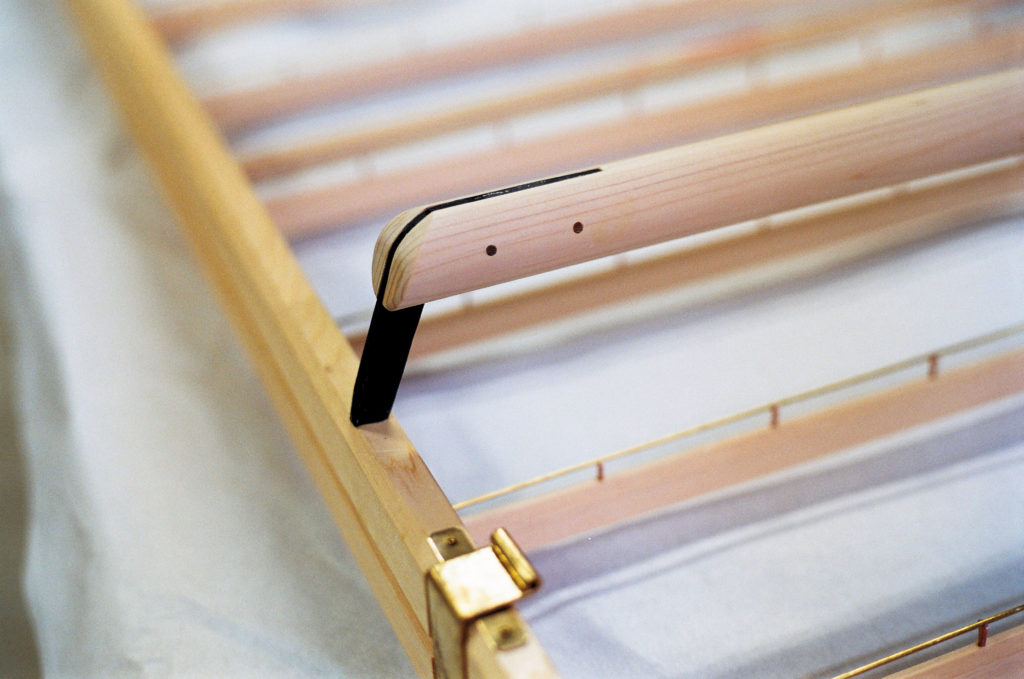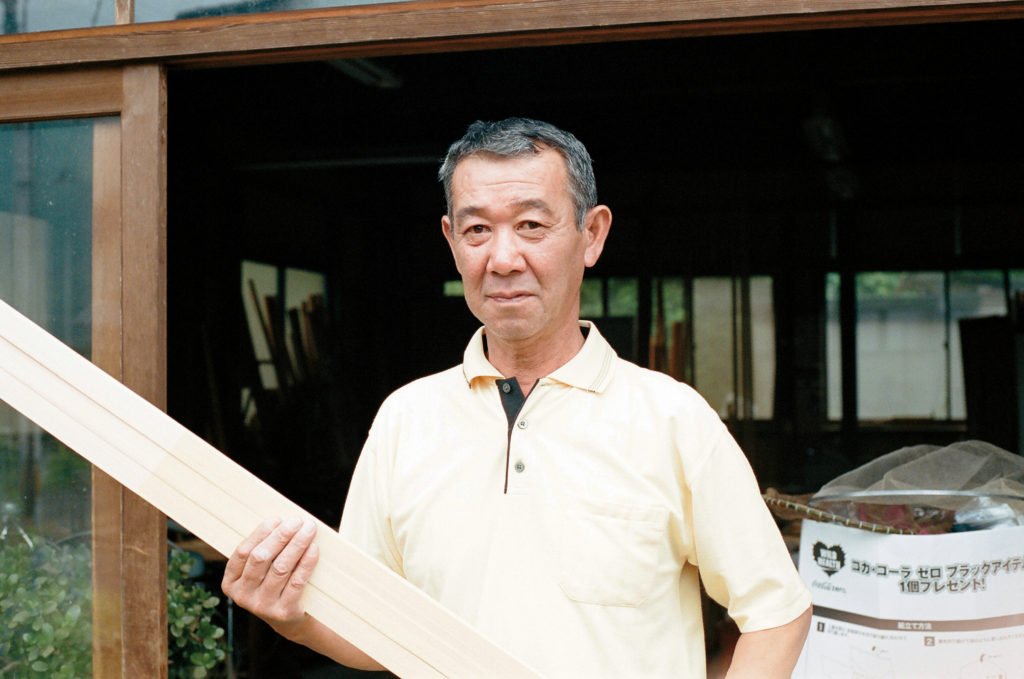
Story 02 | Knowledge Embedded into Tools
Man can do many thing without tools but with tools he can become godlike. And so it is that the alchemy of handmade paper is completely reliant on two tools: the Keta (or ‘Koteh’ as it’s called in Mino) and the Su (a bamboo screen bound in silk). Essentially, the Keta is a large, roughly one meter wide rectangular frame, its bottom portion holds slats supporting copper wires which carry the Su, and the top frame folds down via metal hinges to seal the Su in tight. Washi would not exist without these tools and the makers who craft them. Shouji Kazunari is the last Keta maker in Mino, and one of only three remaining Keta makers in Japan.
We visit him late in the afternoon at his workshop where he sits cross-legged as he talks, surrounded by pale wood shavings from “one of the most expensive woods in the world”. His suntanned face holds eyes that are exceedingly shiny and when laughing he shows no shame about a missing tooth. He tells us the story of his Keta making: “I started making sliding wooden doors about forty years ago when I worked for the boss of a local hardware store. My boss had a master who knew how to build Keta, but for some reason that master never shared his knowledge of Keta construction. I had to take many Keta apart to understand how they were built.”
Learning the minute specifications of Keta construction, Kazunari eventually understood the rationale behind the placement of specific slats and grooves and devised how to make correct joints to minimize water damage. “I make everything by hand now, except the hinges,” as he shows us bamboo nails he has carved by hand to seal the joints. Taking a week to build, each Keta will last roughly three to four years, eventually decaying from water damage as it is regularly in liquid.
There is question offer question about the looming future as we talk. “The future? Well, I am Sixty now,” he says with a smile, “I can’t afford to have an apprentice without government support, and I have no sons, so I don’t know what will happen to Keta making, but I do know that in ten years, when I retire, I’m going fishing.”
< PAPERSKY no.33(2010) >












